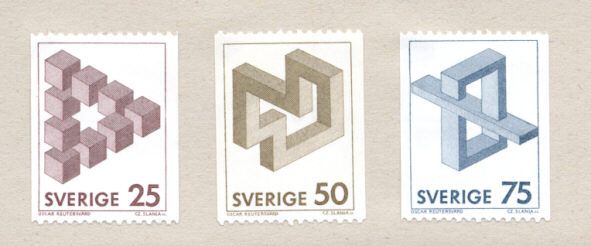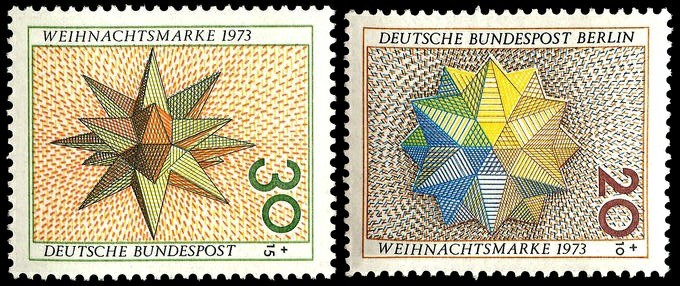

Develop spatial imagination
0.00 $
0 item(s)
Polyhedra on the stamps
Stamps cover all significant events happening in the world. Much attention was paid to polyhedra by artists-philatelists. The stamp dedicated to Leonhard Euler with icosahedron's image was issued in 1983 in East Germany (200th anniversary of the scientist).

Another stamp was issued in Switzerland in 2007 and was devoted to the 300th birth anniversary of Leonhard Euler.
Both stamps contain the famous Euler's theorem for polyhedra (read more about it in Issue #7 of Magic Edges).
This is the stamp issued in Monaco in 2000. It was dedicated to the Year of mathematics. You can see the image of the dodecahedron there.

The stamp issued in Hungary in 1980 depicts Johannes Kepler, a mathematician and an astronomer, and his model of the universe based on regular polyhedra (Issue #4 of Magic Edges).

The stamp issued in Italy in 1994 is dedicated to Luca Pacioli (Issue #3 of Magic Edges). You can see a dodecahedron among various items in front of the scientist.
The stamp issued in Mongolia contains a copy of an engraving by Albrecht Durer "Melancholia". One of the engraving elements is a polyhedron, a prism truncated at the top and the bottom.


You can also see two stamps where you will not find polyhedra in their conventional sense.
The stamp is devoted to the mathematical congress in Innsbruck (Austria), held in 1981. It is based on Escher's impossible box.

In 1973, the West German postal company issued stamps dedicated to two stellate forms of the dodecahedron.
The Great stellated dodecahedron (left) and the Small stellated dodecahedron on the right.
Popular
The founders of Mirny, located in the Arkhangelsk region, placed a polyhedron, the Great...
In the natural environment, regular polyhedra can be found in the form of crystals (minerals). The...
The Italian company BULGARI, founded in 1884, actively uses the octagon's geometric shape to...
Find a gift for the schoolboy that will be interesting, useful, and not ruin the family budget - is...
Sometimes you hear the question: “Why did you choose paper (or more precisely, design cardboard) to...
In geometry, the section which deals with three-dimensional figures is called stereometry. The...
The Kepler's Star (nor Keplerstjernen), 45 meters high, is located near Oslo in Gardemoen Airport. A huge...

